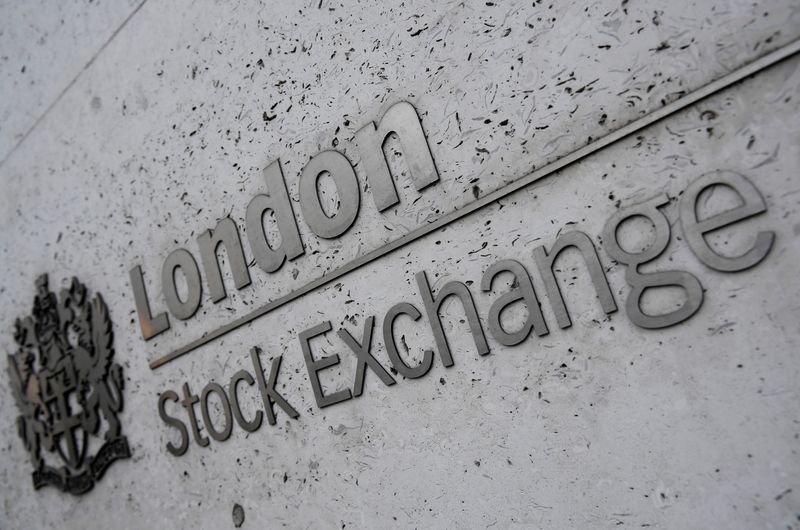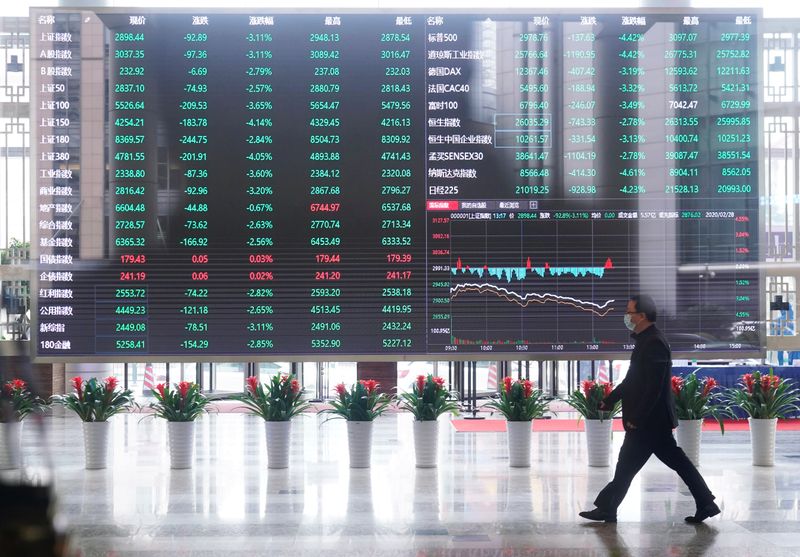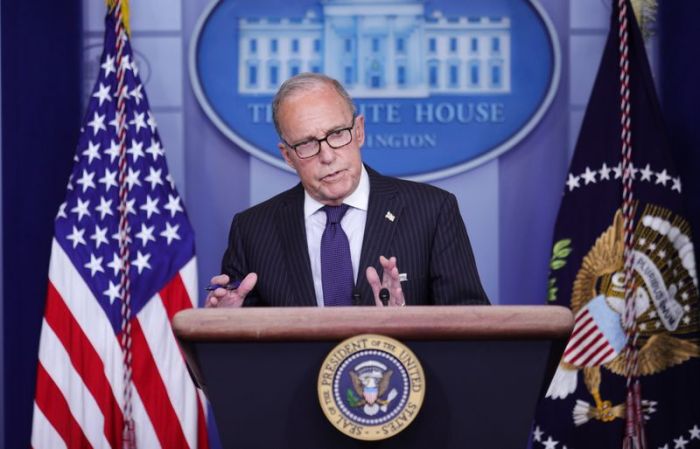NEW YORK (Reuters) – The dollar and global equity markets rose on Wednesday and the S&P 500 and the Nasdaq hit fresh all-time highs, but Wall Street retreated after the Federal Reserve nixed, for now, dovish monetary policy measures such as yield-curve control.
The U.S. central bank also cautioned in minutes of its July 29-29 meeting that economic recovery remains highly uncertain, that job gains in May and June had likely slowed, and that “substantial improvement” in the labor market would hinge on a “broad and sustained” reopening of businesses.
The readout on Fed discussions provides hints to further action that the U.S. central bank could take in September. No change in interest rate policy is expected until end-2021.
“The minutes are saying that the Fed doesn’t really seem interested in implementing yield-curve control,” said Nancy Davis, chief investment officer of Quadratic Capital in Greenwich, Connecticut.
Trillions of dollars in stimulus, equal to 14% of gross domestic product, has led to asset price inflation and currency depreciation, Davis said. The equity and fixed-income markets are totally disconnected, Davis added.
Some investors had been hoping that the Fed might follow through on a proposed policy to cap yields at a certain level by buying short-term debt, a move that would reinforce the central bank’s guidance that rates are staying low for now.
Longer-maturity U.S. Treasuries rose on the news, which said policymakers judged yield caps and targets are “not warranted” now but should remain option for future.
Treasuries Benchmark 10-year notes last rose 5/32 in price to yield 0.6541%, from 0.669% late on Tuesday.
The 30-year bond last rose 22/32 in price to yield 1.3705%, from 1.399%.
The dollar index, which reflects the greenback’s value against six leading trading currencies, rose 0.88%, with the euro down 0.75% to $1.184. The Japanese yen weakened 0.62% versus the U.S. currency to 106.05 per dollar.
Before the Fed news, the S&P 500 and the Nasdaq hit all-time highs, driven largely by Apple Inc. Its shares rose 1.4% to make it the first publicly listed U.S. company to reach $2 trillion in market capitalization, with strong results from retailers Target and Lowe’s also lifting sentiment.
But Wall Street later retreated. The Dow Jones Industrial Average fell 0.29%, the S&P 500 lost 0.28% and the Nasdaq Composite dropped 0.41%.
The dollar index rose 0.805%, with the euro down 0.67% to $1.1849.
The Japanese yen weakened 0.46% versus the greenback at 105.88 per dollar.
Spot gold prices fell 2.99% to $1,941.06 an ounce.
Brent crude futures fell $0.18 to $45.28 a barrel. U.S. crude futures slid $0.04 to $42.85 a barrel.
Earlier, in Europe, travel and leisure shares rose, with British Airways owner International Airlines Group up 5.3% on a British plan to use COVID-19 testing at London’s Heathrow Airport to help cut the time travelers have to spend in quarantine.
MSCI’s benchmark for global equity markets rose 0.25% to 573.33, while its index for emerging markets stocks rose 0.45%.
Europe’s broad FTSEurofirst 300 index added 0.68% to 1,434.54.
Overnight, MSCI’s broadest index of Asia-Pacific shares outside of Japan fell 0.2%, retreating from a seven-month high hit after the S&P 500’s record.
(Reporting by Alwyn Scott, Herbert Lash and Tom Wilson; Editing by Will Dunham and Nick Zieminski)

























